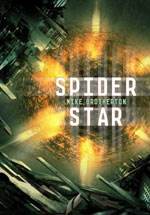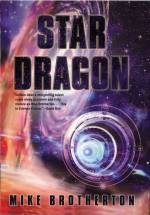Search
The Hubble Space Telescope Proposal Review: Part 1
May 14th, 2008
I have a little time before I have to catch a taxi to the airport, and I will get some things down while they are fresh.
First, my primary reason to do this review this year was that the proposals were for a post-repair mission refurbished and repaired Hubble Space Telescope. This involves repairing not one, but two failed instruments (the Advanced Camera for Surveys AKA ACS, and the Space Telescope Imaging Spectrograph AKA STIS). Also, two powerful new instruments will be installed (Wide Field Camera 3 AKA WFC3 and Cosmic Origins Spectrograph AKA COS). With a full suite of instruments for the first time in years, some of them providing significantly enhanced capabilities (in some modes, COS is an order of magnitude more powerful than any previous spectrograph on Hubble), the proposed science was sure to be exciting.
And it was. And I can’t be very specific at all about it, as the proposals and the information contained within them is proprietary, scientifically classified if you will. This is to protect the scientists and the institute all around. Although it is rare, ideas are stolen. More practically, it’s pretty shitty to hear people discussing your proposal through anything but official channels. One worst case scenario is hearing news that your proposal is definitely getting time, and then having that fall through (sometime there are constraints that aren’t clear on first review, or conflicts that need to be resolved at a higher level).
Some statistics. 3500 orbits are available for guest observer programs. About 2000 are given out by a dozen panels, including mine (5 stellar, 5 extragalactic, and 2 planetary). There are an additional 400 orbits to subsidize larger proposals granted time by the panels. There are about 1100 orbits reserved for Large/Treasury programs that are reviewed by a higher level telescope allocation committee (TAC). The TAC can rebalance these allocations to improve the science program as they see it.
The oversubscription rate was about 6 to 1 this cycle (17). That means about 85% of the proposals fail to be awarded time. It’s competitive business.
There are also some 1000 snapshot opportunities to fill in orbits between longer observations and make more efficient use of the telescope. Oversubscription rate for these this cycle was about 4 to 1.
There is some $3 million dollars in analysis money for archival projects or theoretical projects that support Hubble science.
The servicing mission is likely to occur in early to mid-October 2008 (getting through what is usually the worst of hurrican season). Two shuttles are required, as Hubble is in a very different orbit than the space station and a rescue must be possible if the shuttle is damaged on liftoff.
OK, that’s all for now. Some more personal thoughts about the experience later.
You can follow any responses to this entry through the RSS 2.0 feed. You can leave a response, or trackback from your own site.


Two shuttles are required, as Hubble is in a very different orbit than the space station and a rescue must be possible if the shuttle is damaged on liftoff.
Have two shuttles ever been in orbit at the same time?
[…] Original post by Mike Brotherton […]
I don’t believe so. There have been missions like Apollo-Soyuz before. A second emergency shuttle launch would be our generation’s Apollo 13. Hope it doesn’t happen.
This will be the first time (outside of stupid michael bay movies) that two shuttles have even been prepped simultaneously for launch. Atlantis is going up, and Endevour will be on the pad to be called on if necesary. As I understand, this will be Atlantis’ last mission (to be retired even before Discovery). The other servicing missions went off without a hitch, and the shuttles are much safer now, so hopefully things should be ok…
[…] I’ve written about the process before (and followed up with reports from the review panel, part one and part […]